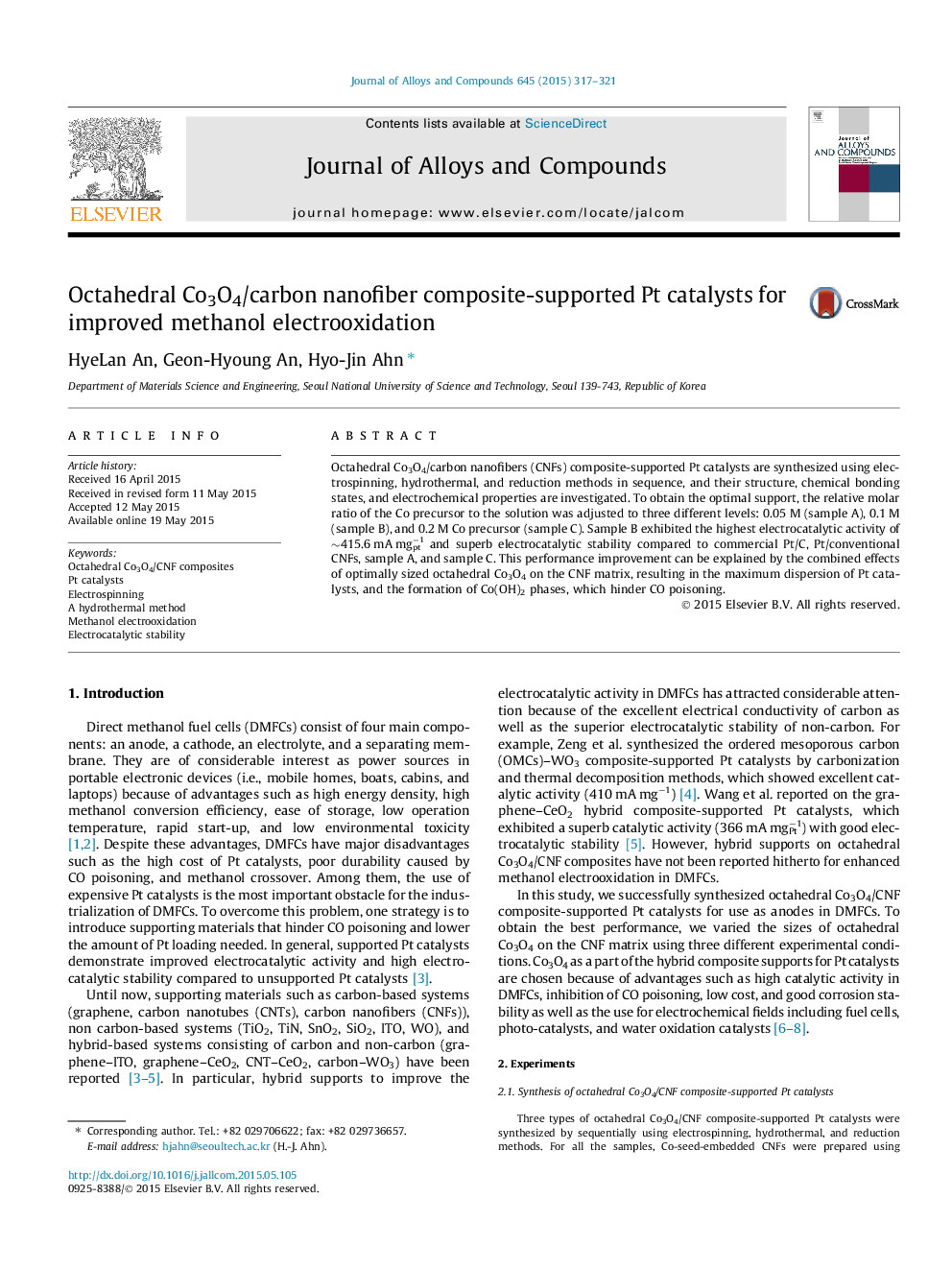| Article ID | Journal | Published Year | Pages | File Type |
|---|---|---|---|---|
| 1608379 | Journal of Alloys and Compounds | 2015 | 5 Pages |
Abstract
Octahedral Co3O4/carbon nanofibers (CNFs) composite-supported Pt catalysts are synthesized using electrospinning, hydrothermal, and reduction methods in sequence, and their structure, chemical bonding states, and electrochemical properties are investigated. To obtain the optimal support, the relative molar ratio of the Co precursor to the solution was adjusted to three different levels: 0.05Â M (sample A), 0.1Â M (sample B), and 0.2Â M Co precursor (sample C). Sample B exhibited the highest electrocatalytic activity of â¼415.6Â mAÂ mgptâ1 and superb electrocatalytic stability compared to commercial Pt/C, Pt/conventional CNFs, sample A, and sample C. This performance improvement can be explained by the combined effects of optimally sized octahedral Co3O4 on the CNF matrix, resulting in the maximum dispersion of Pt catalysts, and the formation of Co(OH)2 phases, which hinder CO poisoning.
Related Topics
Physical Sciences and Engineering
Materials Science
Metals and Alloys
Authors
HyeLan An, Geon-Hyoung An, Hyo-Jin Ahn,
